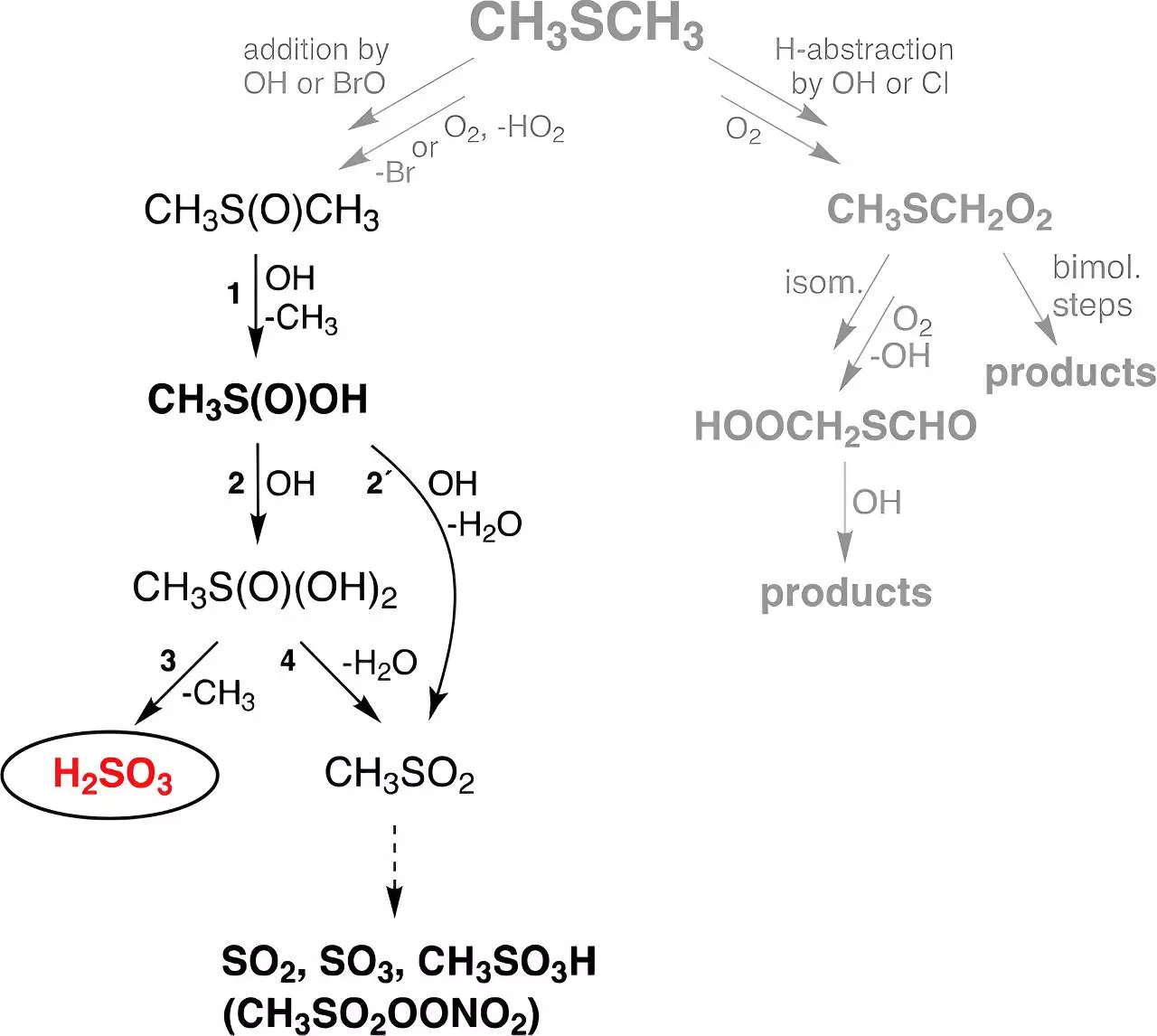The field of atmospheric chemistry continues to reveal astonishing complexities, and recent research from the Leibniz Institute for Tropospheric Research (TROPOS) in Leipzig underscores this fact. For the first time, scientists have successfully detected sulfurous acid (H₂SO₃) within the gas phase of the atmosphere, marking a significant advancement in our understanding of chemical processes occurring above us. This finding, published in the prestigious journal Angewandte Chemie, challenges long-standing beliefs about sulfur compounds and their behavior under atmospheric conditions.
Until now, sulfurous acid was thought to be nearly impossible to isolate due to its elusive nature. Traditional textbooks on chemistry often discuss its formation in aqueous solutions of sulfur dioxide (SO₂), but empirical evidence of H₂SO₃ in isolation has remained elusive. Prior research efforts focused primarily on the detection of its associated bases, bisulfite (HSO₃⁻) and sulfite (SO₃²⁻), while the actual existence of sulfurous acid went largely unconfirmed.
The only prior acknowledgment of H₂SO₃’s presence in a laboratory setting came from Helmut Schwarz’s team in 1988, which used a mass spectrometer to detect the compound under vacuum conditions. However, the transient nature of sulfurous acid, with an estimated lifetime of just 10 microseconds, rendered it difficult to study further. Theoretical models had suggested that H₂SO₃ could potentially form as a byproduct during the gas-phase reactions involving hydroxyl (OH) radicals and dimethyl sulfide (DMS), an organic compound largely produced by marine biological processes.
This is critical because DMS represents the largest biogenic source of sulfur entering our atmosphere, with an annual output of around 30 million tons. Therefore, unraveling the pathways that lead to the formation of sulfurous acid could have profound implications for global atmospheric chemistry, particularly in relation to the sulfur cycle.
At TROPOS, researchers meticulously investigated the reaction pathways that lead to the formation of sulfurous acid from DMS. Using state-of-the-art flow reactors designed to simulate atmospheric conditions, they successfully demonstrated the gas-phase stability of H₂SO₃, finding that the compound remained intact for up to half a minute. This unexpected stability prompts questions about H₂SO₃’s potential influence on atmospheric dynamics; if it can persist for more extended periods, it could indeed affect various chemical processes.
Dr. Torsten Berndt, who spearheaded the experiments, expressed his astonishment at the clear signals for a compound that had been largely relegated to the realm of mere theoretical speculation. The experimental yield of H₂SO₃ was even higher than predicted, indicating that this newly confirmed reaction pathway has the potential to significantly alter our understanding of sulfur chemistry in the atmosphere.
Integrating the new reaction pathway into a global chemistry-climate model allowed the researchers to make a groundbreaking discovery: approximately 8 million tons of H₂SO₃ are synthesized globally each year. This figure starkly contrasts with the quantities produced through the direct atmospheric conversion of dimethyl sulfide into sulfuric acid (H₂SO₄), which is roughly 200 times lower.
These findings underscore the idea that H₂SO₃ could play a more substantial role in the atmospheric sulfur cycle than previously recognized. The implications extend to climate modeling and pollution processes, raising the stakes for further investigations into the lifecycle and reactivity of sulfur compounds in our atmosphere.
Despite the promise shown by these findings, many questions remain unanswered. While the researchers confirmed sulfurous acid’s gas-phase stability, its interactions with other trace gases and water vapor in the atmosphere require further elucidation. Dr. Berndt emphasized the need for future research to explore optimized experimental conditions that could provide more insight into H₂SO₃’s reactivity and overall significance.
This discovery exemplifies the fluid nature of scientific inquiry, where previously accepted notions can evolve based on new evidence and robust experimentation. With ongoing advancements in detection technology, scientists are better equipped to explore complex chemical interactions and construct nuanced models of atmospheric behavior. As our understanding of atmospheric reactions deepens, it promises to enrich not only our grasp of environmental chemistry but potentially offers new pathways for mitigating climate change and ensuring ecological balance.

